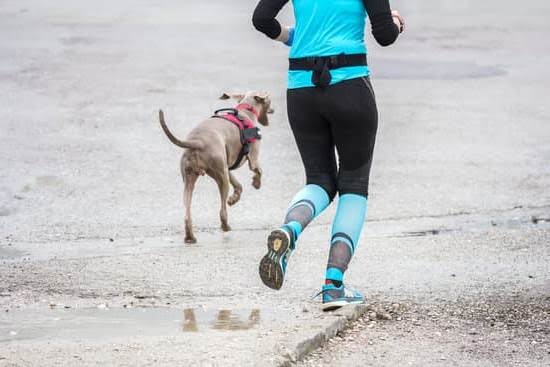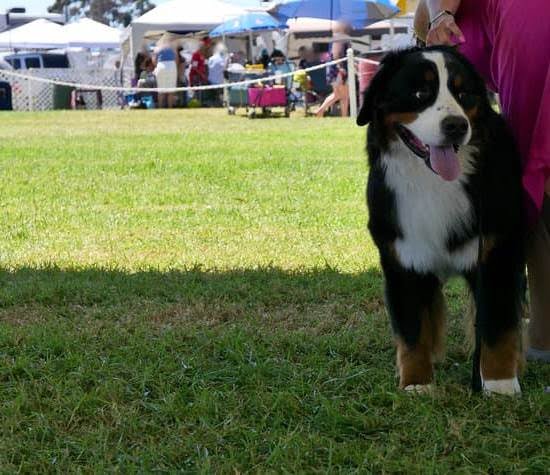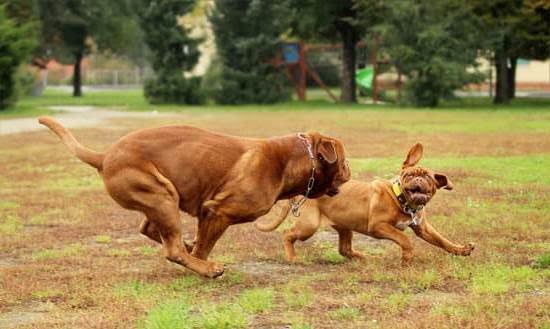Introduction
Big and small dog training matters because it encourages well-rounded socialization, better behavior, and greater understanding between both owner and pet. Training helps a dog understand what is expected of it and allows the owner to be in control of the animal’s behavior. This is particularly important for large dog breeds, who can cause more damage if their aggressive or bad behaviors are not corrected. Training teaches pet parents how to properly interact with their pet, as well as how to effectively communicate with them in order to prevent potential issues from arising in the first place. Small dogs often need extra attention as they may not be confident enough to handle certain situations such as loud noises or potential predators. Training helps small dogs become more comfortable in these situations by teaching them how to respond appropriately whenever these triggers come up. Additionally, proper training will make it easier for a small dog to understand commands and preventive measures that are meant for its safety. Big and small dog training goes beyond just obedience: when done right, it also provides hours of joy and companionship for both owners and their pets alike!
Strength and Stamina
Did you know that training a big dog and a small dog involve a different approach? In order to fully understand how this works, there is need to look at how the two differ in terms of strength and stamina.
Big dogs are often stronger and can spend more time walking, running or playing than smaller dogs. Bigger dogs generally have bigger lungs and hearts, allowing them to store more oxygen which expands their endurance levels significantly. This makes them better suited for activities such as jogging or agility training. On the contrary, smaller dogs tire out much faster due to weaker muscles and slower metabolic rates. It is important to consider these physiological differences when it comes to training sessions with a big dog versus a small dog in order for them both to get the most out of their exercise routines.
Apart from physical strength differences, big and small dogs have different psychological needs when it comes to training as well. In terms of cognitive stimulation, big dogs tend be stimulated by their environment due to increased senses of scent and sight which can lead them outside on adventures further away from home. Smaller breeds require shorter walks but may benefit from more mentally stimulating activities such as puzzle toys or outdoor obstacle courses with tunnels, bridges, weaving poles and so forth. Adjusting training sessions accordingly will help both sizes of pooches get the activity they need while still feeling challenged mentally.
Establishing Trust
Establishing trust is one of the most important aspects to successful dog training, regardless of the size of the dog. Positive reinforcement is key to accomplishing this trust. By associating behaviors that you want your dog to learn with an enjoyable reward or experience, such as a treat-based reward system, playing fetch, or issuing verbal praise and petting, you create a positive feedback loop where the dog will associate good things with obeying commands. This results in your pup trusting that if they obey their trusted leader (you!), pleasurable things will happen.
In addition to helping establish trust between you and your four-legged companion, positive reinforcement also encourages healthy behavior and discourages problem behaviors in both big and small dogs alike. It not only helps reinforce desired behaviors but also can act as a great motivator for pups who may not naturally desire to practice certain activities such as agility training or obedience classes. Utilizing positive reinforcement in these scenarios allows owners to often be able to teach more advanced activities at accelerated rates because of the mutual trust and respect that has developed from using rewards-based training methods consistently. Also, when done properly with consistency, reward-based practices allow your furry friends time to figure out what is expected out of them without feeling punished or scared which could lead to poor behavior or cause stress in some cases. Therefore, no matter what kind of canine companion you have—big or small—positive reinforcement is always a must!
Achieving Results
Training a large dog can present unique difficulties due to their size, strength and power. Generally speaking, it is easier to train a large than a small or medium-sized dog. Popular techniques that work well for training big dogs include positive reinforcement such as verbal praise and rewards, clicker training and establishing clear rules and boundaries right from the start.
Positive reinforcement is an example of reward-based learning; this technique focuses on rewarding desired behaviors with treats or kind words of approval to encourage repetition of these desired behaviors over time. Clicker training works in much the same way but uses special noises from a clicker to mark when the desired behavior has been completed correctly; this helps create clearer communication between the owner and their large dog. Establishing clear rules and boundaries is essential for training any kind of dog, but especially with larger breeds it is important that firm boundaries are set so that your pet knows what behavior is rewarded or punished in order for them to progress in their learning. When starting out bigdogtraining, it is also beneficial to start off slowly with short training sessions so as not to overwhelm them with too much information at once.By following these techniques you can ensure effective results in training your large breed doggetachments Allowing ample breaks during sessions and having plenty of patience during difficult times will also help optimize their responsiveness during the learning process. Reward-based methods help strengthen the bond between owners and their pup while beginning life-long habits which they can continue until they are fully trained adults.
Adapting Strategies
Training a small dog is different from training a big dog since the size and physical strength of the animal determine the techniques. Small dogs require techniques for building trust, cooperation, and respect that are mindful to the realities of their size. Since small breeds don’t have a natural authority figure or assertiveness to compete with larger dogs, proper training is essential for molding good behavior. Here are some effective small dog training techniques:
1. Positive Reinforcement – Positive reinforcement teaches good behaviors by rewarding desired responses from your pet. Use treats or verbal affirmations such as “good boy!” to reward behaviors you are trying to encourage, such as housebreaking and leash manners.
2. Consistency – Like all animals, small dogs thrive on consistency in their routine. Regular feeding times, potty breaks, and playtime help them understand what kind of behavior is expected of them at all times.
3. Physical Control – While it’s important to use gentle methods with a small breed pet, it’s also crucial to be able to physically control him when necessary without causing him pain or discomfort. If your pup pulls during walks, for example, you should keep the leash tight in order for him not run ahead unchecked and bark at other animals or people he encounters outdoors.
4. Use Short Training Sessions – Small breeds tend to get easily overwhelmed and bored so short training sessions will allow them to focus more effectively throughout their learning process than long ones would. Break up sessions into bite-sized bits throughout the day in order for your pup learn faster and retain more information with less stress overall.
Crafting Rules
Before starting dog training, it is important to lay out ground rules and expectations. This helps create an orderly atmosphere of respect between the trainer and the dog. Guidelines need to be established for both big and small dogs, as breeds may respond differently. Even if all dogs require consistent communication, heavy-handedness should not be necessary when working with smaller pups. Instead, gentle, patient leadership should be encouraged.
When creating a set of guidelines for training big or small dogs, some general considerations should always be kept in mind. Training schedules need to incorporate regular but brief sessions where commands are reinforced on a consistent basis;never force a dog to practice any activities or commands they explicitly reject;establish clear boundaries between members of the household and the pup;and set reasonable expectations for completion dates;progress comes from adhering to these guidelines, especially when working with larger breeds of dogs who may take more time for full training as well as maintain regular vet check-ups due to their more physical size. As with any breed of dog, respect is key in order to reinforce patterns that are preferable long-term. Lastly, rewards should be given intently after each successful session– this ensures positive motivation in both big and small canines!
Sparking Engagement
When it comes to successful dog training, engaging both big and small dogs is key. Depending on the size and breed of a dog, the type of treats and exercises that are most effective may vary. For example, large breeds such as German Shepherds respond well to high-value treats such as chicken or steak, while smaller dogs might be more motivated by small bits of cheese or harder biscuits. Exercise is also key when it comes to keeping larger breeds engaged during a training session. A great way to tire out bigger dogs is through activities like fetching toys or Frisbees; however, this can be your best bet for smaller dogs too as most are just as full of energy.
Another important factor in making sure large and small breeds benefit from their training sessions is tailoring the environment. Smaller dogs will have a higher success rate if they train in an area that has few distractions such as a quiet room or closed space whereas bigger breeds will generally do better in outdoor locations with plenty of stimulation. In either case, adjust the difficulty level accordingly; big dogs may need more challenges to keep their interest while little ones should not be overwhelmed by tasks which are too hard or complex. Lastly, providing positive reinforcement when they get something right – either in terms of food rewards or verbal praise – should help keep them focused and engaged throughout the learning process!
Aiming High
Big and small dog training can be a great source of joy to owners, connecting them with their beloved pets in a meaningful way. Training your pup can add structure to your schedules, help reduce outbursts of undesirable behavior, and mean the difference between peace and chaos in the home. It doesn’t matter if you have a big or small breed; sound training principles apply across the board.
Taking it to the next level means setting ambitious goals for your pup – what do you hope to achieve? If you’re just starting out, the focus should be on teaching basic commands like sit, stay, come when called etc. Once they’ve got these commands down pat, why not branch out into other activities that specifically suit your pet?
For large dogs in particular there is so much potential for further advancement – enrolling them in agility classes can improve physical activity levels as well as mental stimulation. Showing dogs is another fun activity that requires immense amounts of discipline and strong bonds between owners and pets alike. Smaller breeds are well suited for tracking activities such as scent-tracking or search tasks where they must use their nose to sniff out certain objects. Service functions such as being guide dogs or emotional support animals also require extensive obedience training before hand – why not give it a try yourself?
No matter how ‘big or small’ your pup may be, taking your dog training regime one step further has never been easier! Pushing oneself beyond the basics lets both owners and their furry friends make sure that no two days look exactly alike. Plus no matter how advanced your pup gets it will always bring even more levels of happiness into both of your lives – so why not give it a shot today?
Celebrating Progress
Big and small dog training is an important task that requires continual dedication. To ensure success, it’s important to break long-term goals into smaller steps and celebrate each increment of progress. This not only keeps the process of training fun for both the dog and their guardian, but it also helps keep a pup motivated to learn.
For example, if you’re teaching your pup to walk on a leash without pulling, start by having them sit every time they feel tension in the leash. Once they understand this concept, reward them with your praise or treats as you slowly start walking together. As your pup progresses, add in new challenges such as introducing distractions like other dogs or going for longer walks in new places. Continue celebrating progress and establishing more challenging skills as your pup masters their current tasks. As your relationship strengthens, so will their respect for you. Celebrating your pup’s successes along the way helps encourage and reinforce the collective progress made towards achieving those bigger long-term goals like mastering effective leash walking or learning complex tricks and commands. Ultimately, breaking down complex tasks into smaller digestible chunks is much less overwhelming than expecting large leaps in behavior right away!
Taking Control
Big and small dog training can be a challenge for busy dog owners. Training your pup takes patience and dedication, but with consistent practice, you will soon be rewarded with a well-behaved, loyal companion. To begin, it is important to establish a positive relationship with your pup by setting clear rules and guidelines for their behavior. Try to include memories or rewards for getting things right, as this will help encourage good behaviors in the future. Additionally, clearly defined boundaries like off-limits furniture or play items can help create an orderly household environment.
When it comes to teaching commands and skills, remember that big and small dogs learn differently; while some breeds can be very sensitive to corrections, others may require more guidance. Implementing obedience classes may be beneficial regardless of the size of your pet; they are great resources if you need additional support in teaching your pup basic commands like sit, stay, come and heel – plus socialization around other pups throughout one-on-one lessons with a professional trainer can also go a long way. In addition to participating in formal classes, don’t forget about daily practice; rewarding good behaviors regularly will reinforce positive planning habits for years to come!

Welcome to the blog! I am a professional dog trainer and have been working with dogs for many years. In this blog, I will be discussing various topics related to dog training, including tips, tricks, and advice. I hope you find this information helpful and informative. Thanks for reading!





